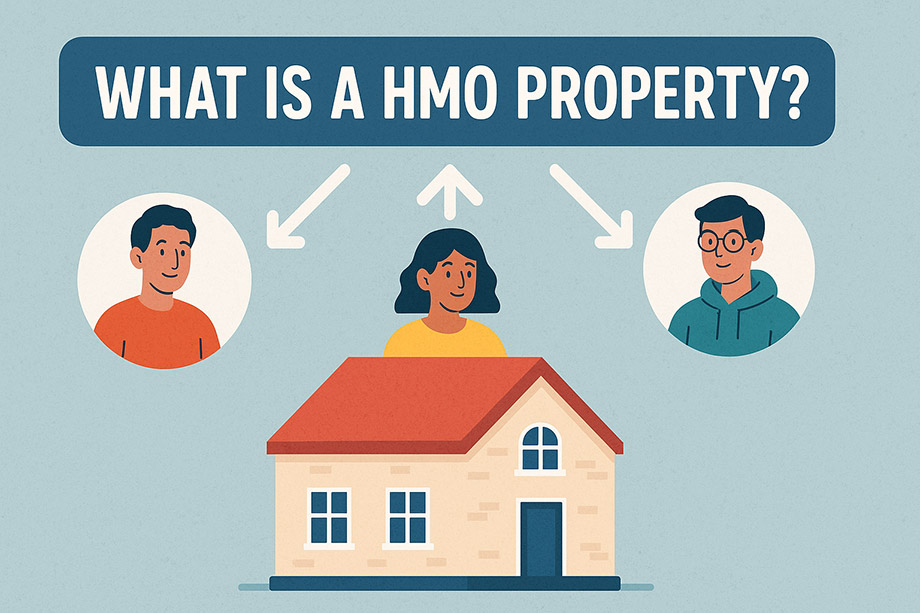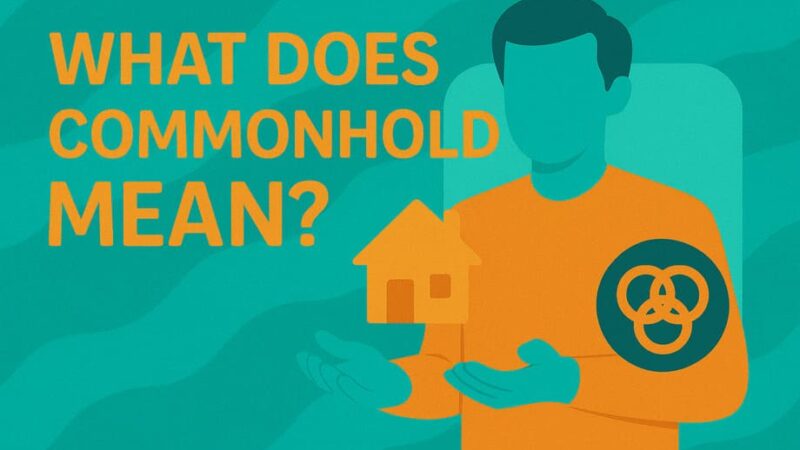What is a HMO Property? The Complete Guide to Houses in Multiple Occupation

Whether you’re a first-time landlord exploring rental investment opportunities or a tenant trying to understand your living situation, you’ve likely encountered the term “HMO.” But what exactly is a HMO property, and why does this classification matter so much in the UK rental market?
In this comprehensive guide, we’ll break down everything you need to know about Houses in Multiple Occupation, from the basic definition to licensing requirements, legal obligations, and the benefits they offer to both landlords and tenants.
What Does HMO Stand For?
HMO stands for House in Multiple Occupation (sometimes called House of Multiple Occupancy). Despite the name suggesting a single house, HMOs can actually take many different forms of residential accommodation where multiple households share common facilities.
The Official Definition: What Makes a Property a HMO?
A property is classified as a HMO if it’s rented to three or more people who form more than one household and share facilities such as a kitchen, bathroom, or toilet. However, the definition becomes more complex when we examine the specific legal criteria.
The Four Essential Criteria for HMO Classification
For a property to be legally classified as a HMO, it must meet all four of these conditions:
- Multiple Households: The occupants must not form a single household (they’re not family members or a single unit)
- Primary Residence: Occupants must be using the property as their only or main residence
- Residential Use: The accommodation must be used solely for residential purposes
- Rental Arrangement: At least one occupant must be paying rent
What Counts as a Household?
Understanding what constitutes a “household” is crucial for HMO classification:
- Single household: Families with children, couples, single persons living alone, or someone with a live-in carer
- Multiple households: Any combination of the above living separately within the same property
For example, three university students sharing a house would count as three separate households, even if they live together like a family unit.
Types of Properties That Can Be HMOs
The HMO classification covers a surprisingly wide range of property types:
Common HMO Property Types
- Shared Houses: Traditional terraced or semi-detached houses with shared kitchens and bathrooms
- Converted Buildings: Large houses subdivided into multiple rooms with shared facilities
- Bedsits: Individual rooms with some shared communal facilities
- Hostels and Lodging Houses: Short-term accommodation with shared facilities
- Student Accommodation: Private student houses (university-owned accommodation is typically exempt)
- Blocks of Converted Flats: Where individual flats share some facilities
- Employee Accommodation: Provided by employers with shared facilities
- Refuges and Supported Housing: Temporary accommodation with shared facilities
- Property Guardian Arrangements: Where multiple households guard vacant properties
What’s NOT Typically Considered a HMO
- Purpose-built flats with self-contained facilities
- Single-family rental properties
- University-owned student accommodation
- Hotels and B&Bs (different regulations apply)
- Care homes and nursing homes (covered by separate legislation)
Large HMOs vs Small HMOs: Understanding the Difference
The distinction between large and small HMOs is crucial because it determines licensing requirements and regulatory oversight.
Large HMOs (Mandatory Licensing Required)
A property is defined as a large HMO if it’s rented to 5 or more people who form more than 1 household, some or all tenants share toilet, bathroom or kitchen facilities, and at least 1 tenant pays rent.
Additional criteria for large HMOs often include:
- The property has three or more storeys
- Houses five or more tenants from different households
- Contains shared facilities
Small HMOs (May Require Additional Licensing)
Properties housing 3-4 people from different households may still be subject to:
- Additional HMO licensing schemes implemented by local councils
- Selective licensing in designated areas
- Article 4 directions removing permitted development rights
HMO Licensing Requirements
Mandatory Licensing for Large HMOs
All large HMOs require a mandatory licence from the local council before they can be legally rented out. This licence:
- Must be obtained before accepting tenants
- Typically lasts for up to 5 years
- Requires renewal before expiry
- Can include specific conditions about occupancy, management, and facilities
Additional and Selective Licensing
Many local authorities have introduced additional licensing schemes that may require:
- All HMOs to be licensed regardless of size
- Properties in specific geographical areas to be licensed
- Certain types of rental properties to obtain selective licensing
Important: If your landlord doesn’t have a licence when one is required, you may be able to reclaim some of your rent by applying to a tribunal.
How to Check If a Property Needs a Licence
- Contact your local council’s housing department
- Check the council’s website for licensing schemes in your area
- Ask landlords to provide proof of licensing
- Use the council’s online licence register if available
Standards and Regulations for HMO Properties
HMO properties must meet higher standards than standard rental properties due to the increased risks associated with multiple households sharing facilities.
Mandatory Standards for HMO Properties
Space and Overcrowding
- Minimum room sizes for sleeping accommodation
- Maximum occupancy limits based on room sizes and facilities
- Adequate communal space provision
Kitchen Facilities
- Adequate cooking facilities for the number of households
- Sufficient food storage (refrigerator and cupboard space)
- Adequate sink and food preparation areas
- Proper ventilation and extraction
Bathroom and Toilet Facilities
- Minimum ratios of facilities to occupants
- Separate toilet facilities where required
- Adequate hot and cold water supply
- Proper ventilation and lighting
Fire Safety Requirements
- Appropriate fire detection and alarm systems
- Fire doors and escape routes
- Emergency lighting where required
- Fire-resistant construction and compartmentation
General Property Standards
- Adequate heating in all rooms
- Proper electrical installations with regular testing
- Annual gas safety certificates
- Adequate natural lighting and ventilation
- Proper refuse disposal arrangements
Health and Safety Responsibilities
HMO landlords have enhanced responsibilities compared to standard rental properties:
- Annual gas safety checks with certified engineers
- Electrical installation testing every five years
- Portable appliance testing (PAT) for provided electrical items
- Regular property inspections and maintenance
- Prompt response to tenant complaints and repairs
Benefits of HMO Properties
For Landlords
Higher Rental Yields
- Multiple rental streams from individual tenants
- Generally higher overall rental income compared to single lets
- Reduced void periods (partial occupancy still generates income)
Portfolio Diversification
- Different tenant market compared to family rentals
- Consistent demand in areas with young professionals and students
- Potential for capital appreciation in high-demand areas
Professional Development
- Enhanced property management skills
- Better understanding of landlord-tenant legislation
- Experience with more complex property regulations
For Tenants
Affordability
- Lower individual rent costs compared to renting entire properties
- Shared utility costs and council tax
- No need for large deposits on furniture and white goods
Flexibility
- Often shorter-term arrangements suitable for temporary needs
- Less commitment than family-style rentals
- Easier to relocate for work or study
Social Opportunities
- Built-in social network with other tenants
- Shared experiences and potential friendships
- Less isolation, particularly for young professionals new to an area
Common Challenges and Considerations
For Landlords
Increased Management Complexity
- Managing multiple tenant relationships
- Higher turnover rates requiring frequent re-letting
- More complex deposit and rent collection arrangements
Enhanced Legal Responsibilities
- Stricter regulatory compliance requirements
- Higher penalties for non-compliance
- More frequent inspections and paperwork
Property Wear and Tear
- Higher occupancy leading to increased maintenance needs
- Shared facilities requiring more frequent replacement
- Potential for conflicts between tenants affecting property
For Tenants
Shared Living Challenges
- Potential conflicts over cleanliness and shared spaces
- Varying lifestyles and schedules among housemates
- Limited privacy compared to self-contained accommodation
Deposit and Moving Issues
- Individual responsibility within shared properties
- Potential complications when other tenants cause damage
- Joint and several liability in some tenancy arrangements
Legal Protections and Rights
Tenant Rights in HMOs
- Right to safe and habitable accommodation meeting HMO standards
- Protection from unlawful eviction and harassment
- Right to have repairs carried out promptly
- Access to local authority support for standards enforcement
- Potential rent repayment orders for unlicensed properties
Landlord Protections
- Clear licensing frameworks providing regulatory certainty
- Defined standards reducing ambiguity about requirements
- Professional support through landlord associations and advisers
- Legal protection when following proper procedures and maintaining standards
How to Determine If Your Property Is a HMO
Step-by-Step Assessment
- Count the Occupants: How many people live in the property?
- Identify Households: Do occupants form separate households?
- Check Shared Facilities: Are kitchen, bathroom, or toilet facilities shared?
- Confirm Residential Use: Is the property used solely for residential purposes?
- Verify Rental Arrangements: Is at least one occupant paying rent?
When in Doubt
If you’re unsure whether your property qualifies as a HMO:
- Contact your local authority’s housing department
- Seek advice from property management professionals
- Consult with landlord associations or legal advisers
- Review your local council’s HMO guidance documents
Future Trends and Considerations
Regulatory Changes
The HMO sector continues to evolve with:
- Increasing numbers of local authorities introducing additional licensing
- Enhanced minimum room size requirements
- Stricter fire safety regulations
- Greater emphasis on energy efficiency standards
Market Developments
- Growing demand for flexible accommodation options
- Increasing professionalization of the HMO sector
- Technology integration for property management
- Focus on tenant experience and retention
Conclusion: Making Informed Decisions About HMOs
Understanding what constitutes a HMO property is essential for anyone involved in the UK rental market. Whether you’re a landlord considering HMO investment or a tenant living in shared accommodation, knowing the definition, requirements, and implications helps ensure compliance and protects your interests.
HMO properties offer unique opportunities and challenges. For landlords, they can provide higher yields and portfolio diversification, but require enhanced management skills and regulatory compliance. For tenants, they offer affordable, flexible accommodation with built-in social opportunities, though shared living isn’t suitable for everyone.
The key to success in the HMO sector lies in understanding and embracing the additional responsibilities that come with this property type. Proper licensing, adherence to enhanced standards, and professional management practices create safe, profitable, and sustainable rental arrangements that benefit everyone involved.
Before making any decisions about HMO properties, always consult with your local authority, seek professional advice where needed, and ensure you fully understand the specific requirements in your area. The investment in proper knowledge and compliance pays dividends in successful, stress-free property management.
This guide provides general information about HMO properties in the UK. For specific advice about your circumstances, always consult with your local authority and qualified property professionals.
Last Updated on July 23, 2025 by James Cartwright







